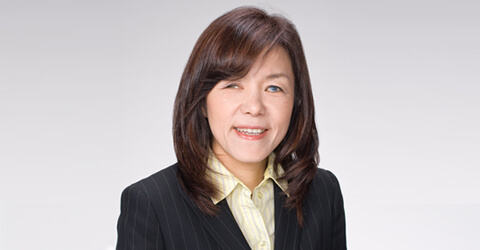Dr Chieko Asakawa is a blind Japanese Computer Scientist and an IBM Fellow who has been instrumental in furthering accessibility research and development for the past three decades. Challenging thinking on visually impaired technology usage leads to advancing web accessibility, including digital Braille and voice browsers.
Cheiko Asakawa was born in Osaka, Japan. She lost her eyesight after a pool accident at the young age of 14. That did not stop her from studying and finding a solution to her problem while helping the disabled community.
Dr Asakawa recalled how she had to rely on her two brothers to read her school textbooks aloud while transcribing them into Braille. “It was hard and not much fun, and I just wanted to be independent.” She was afraid for her future, as “without the technology, jobs for the blind were really limited.” When I started out, there was no assistive technology,” says Dr Asakawa. “I couldn’t read any information by myself. I couldn’t go anywhere by myself.”
Those “painful experiences” ignited a fire within her and set her on a learning path to solving her painful ordeal. So she went ahead and invented that technology!
She completed her college education at the University in Osaka and then attended a 2-year-long Computer Programming course. She then joined IMB Tokyo and started pioneering work on accessibility at the firm while also earning her Doctorate in Engineering from the University of Tokyo in 2004. In 2009, she became an IBM Fellow, the firm’s top honour for employees.
Her research projects have included developing a word processor and a digital library for Braille documents. Dr Asakawa is behind early digital Braille innovations and created the world’s first practical web-to-speech browser. Those browsers are commonplace these days, but 20 years ago, she gave blind internet users in Japan access to more information than they’d ever had before. She has developed NavCog, a voice-controlled smartphone app that helps blind people navigate complicated indoor locations.
Her Work On Micro Mapping
Low-energy Bluetooth beacons are installed roughly every 33ft to create an indoor map. Sampling data is collected from these beacons to build “fingerprints” of a specific location.
“We detect user position by comparing the users’ current fingerprint to the server’s fingerprint model. Collecting large amounts of data creates a more detailed map than is available in an application like Google Maps, which doesn’t work for indoor locations and cannot provide the level of detail blind and visually impaired people need,” Dr Asakawa says.
Her Next Big Challenge:
Dr Asakawa’s next challenge is the “AI suitcase.” It is a lightweight navigational robot that helps a blind person navigate an airport’s tricky terrain, providing directions and useful information on flight delays and gate changes.
The suitcase also has a motor embedded to move autonomously, an image-recognition camera to detect surroundings, and Lidar – Light Detection And Ranging – for measuring distances to objects. The suitcase tells the user to pick it up when stairs need to be climbed.
“If we work together with the robot it could be lighter, smaller and lower cost,” Dr Asakawa says.
The prototype was “pretty heavy”, she admits. However, at the pilot experiment of the second prototype held on 2nd November 2020, the AI suitcase successfully navigated itself to an All Nippon Airways departure counter after receiving a command from Dr Asakawa.
As soon as she gave the command via her smartphone, motors connected to the suitcase came to life, with the AI system providing voice guidance as it automatically stopped for doors and swerved to avoid people.
The suitcase-size has been modified to be small enough to be brought onboard flights as carry-on luggage, and also indicates the direction of travel through haptic feedback via its handle. Its conversational AI can additionally provide information about stores in the vicinity and help the user shop.
“AI guides me as it replaces the sight I have lost. It is a dream to be able to go out freely by myself. I want to really enjoy travelling alone. That’s why I want to focus on the AI suitcase even if it is going to take a long time.” said Dr Asakawa
AI Leading The Way For The Greater Good Of Humanity
Microsoft has given a whopping sum of $115m (£90m) to its AI for Good programme and $25m to AI for its accessibility initiative to help disabled people globally. Their projects include Seeing AI, a talking camera app that is a central part of its accessibility work.
“People with disabilities have been overlooked when it comes to technology development as a whole,” says Nick McQuire, head of the enterprise and AI research at CCS Insight. But he says that’s been changing in the past year, as big tech firms push hard to invest in AI applications that “improve social wellbeing”.
Dr Asakawa concludes: “I’ve been tackling the difficulties I found when I became blind. I hope these difficulties can be solved.”








